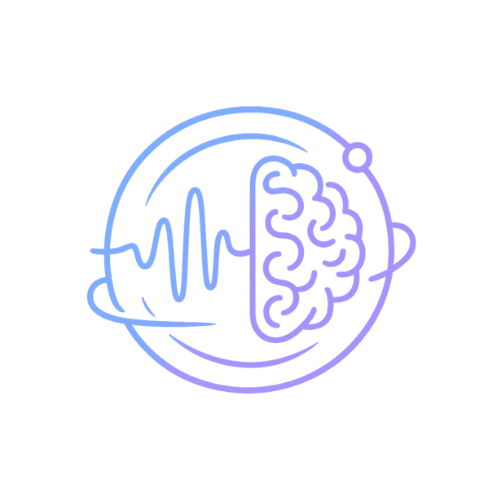Frequencies, Feelings & the Festival Brain: The Science of Sound
What is music, really? At its core, it’s just a series of vibrating air particles—frequencies your brain transforms into emotion, memory, and movement. In this post, we’ll break down how different frequencies interact with our brain and body, how music is produced digitally, and why standing in front of a subwoofer can literally change your state of mind.
All Sound Is Vibration: The Physics of Music
Sound travels in waves—vibrations in air that reach your ears and get translated into neural signals. Each sound has a frequency, measured in hertz (Hz)—how many wave cycles occur per second.
Low frequencies (20–250 Hz): Felt in the body more than heard—hello, bass 😈
Mid-range (250 Hz–4 kHz): Where vocals and most instruments live.
High frequencies (4 kHz–20 kHz): Brighter sounds like hi-hats or synth sparkles ✨
Instruments and voices produce complex combinations of these frequencies—what we call timbre—that give each sound its unique color.
How the Brain Decodes Sound
Once sound hits your ear, it’s transduced into electrical signals by the cochlea and sent to the auditory cortex in your brain. But it doesn’t stop there:
The limbic system processes emotion, which is why music can make you cry or feel euphoric.
The motor cortex gets activated by rhythm—yes, even when you’re just tapping your foot.
Memory centers like the hippocampus light up when music triggers nostalgia (Janata, 2009).
Frequencies don’t just reach your ears—they light up your brain like a festival stage.
How Frequencies Affect Our Mental State
Different frequencies and rhythms influence brainwave activity:
🎵 Alpha waves (8–12 Hz) – Linked to relaxation. Found in ambient music, chill downtempo.
🧠 Beta waves (13–30 Hz) – Alertness and focus. Fast-paced techno or trance can stimulate this.
🌀 Gamma waves (>30 Hz) – Heightened perception and memory. Found in intense, layered compositions.
🌙 Delta/theta waves (<8 Hz) – Deep relaxation or meditative states. Common in slow, droning sounds.
Researchers have used binaural beats (two slightly different frequencies played in each ear) to entrain the brain into desired states (Wahbeh et al., 2007).
Digital Sound: Producers as Frequency Architects
Modern music producers use digital audio workstations (DAWs) like Ableton or FL Studio to build tracks from scratch. These platforms allow them to generate or shape frequencies with:
Synthesizers – Software instruments that mimic or create sounds from waveforms.
EQ (Equalization) – Used to boost or cut specific frequency ranges.
Sidechain compression, reverb, layering – Techniques that manipulate space, punch, and feel of each frequency.
Producers sculpt these elements like sonic sculptors—creating an emotional journey through frequency.
Bass You Can Feel: Music and the Body
At large events or raves, low frequencies don’t just reach your ears—they hit your skin, chest, and even your organs. These vibrotactile sensations are real and measurable (Huang et al., 2012).
Sub-bass (under 60 Hz) is physically felt more than heard.
Feeling bass through the ground activates mechanoreceptors in your body, creating a full-body sensory experience.
This multisensory input boosts endorphin and dopamine release, increasing group bonding and pleasure (Fritz et al., 2013).
It's why standing in the middle of a booming crowd can feel like you're melting into the music.
More Wild Science Facts About Sound & Music
Synesthesia – Some people see music in colors or shapes, due to cross-activation between sensory areas.
Music and immunity – Listening to music has been linked to lower cortisol and boosted immune markers (Chanda & Levitin, 2013).
Predictive processing – Your brain constantly predicts the next beat or chord, which is why a drop or unexpected key change feels so good (Vuust et al., 2009).
I plan on writing about all of these topics individually in the future :)
Frequencies Are Feelings
Music is pure vibration, but its impact is anything but simple. Every beat, bassline, and synth stab becomes a full-body, whole-brain event. And when we gather together to feel these frequencies as a collective—at clubs, festivals, or in our headphones—we’re syncing not just with the music, but with each other 💫
Citations
Janata, P. (2009). The neural architecture of music-evoked autobiographical memories. Cerebral Cortex.
Wahbeh, H., et al. (2007). Binaural beat technology in humans: a pilot study to assess psychologic and physiologic effects. Journal of Alternative and Complementary Medicine.
Huang, J., et al. (2012). Feel the Bass: Using Tactile Feedback to Convey Musical Rhythm. ACM CHI Conference.
Fritz, T., et al. (2013). The Neuroscience of Music: Understanding the Neural Correlates of Aesthetic Experience.
Chanda, M. L., & Levitin, D. J. (2013). The neurochemistry of music. Trends in Cognitive Sciences.
Vuust, P., et al. (2009). Predictive coding of music—brain responses to rhythm incongruity. Cortex.

